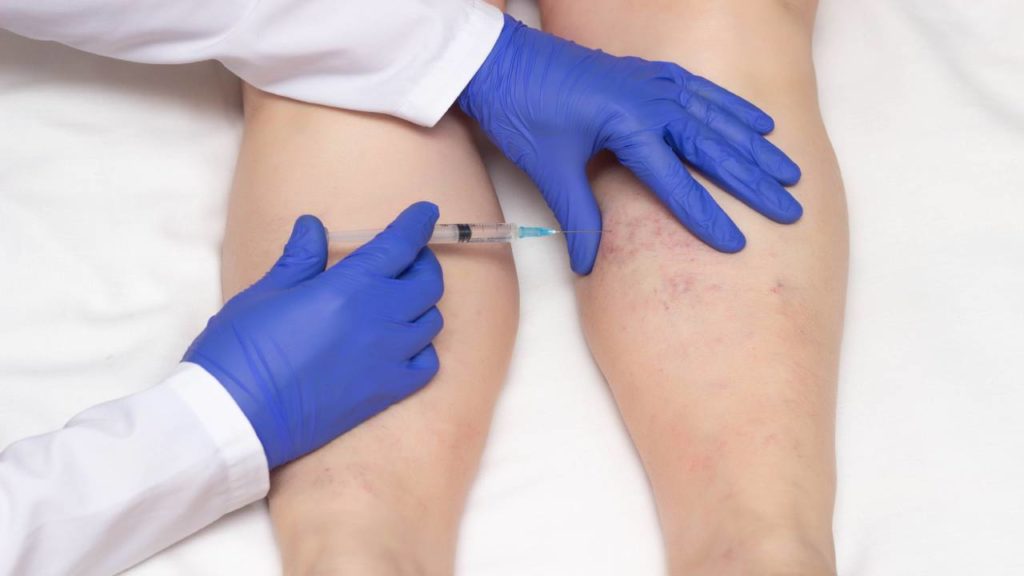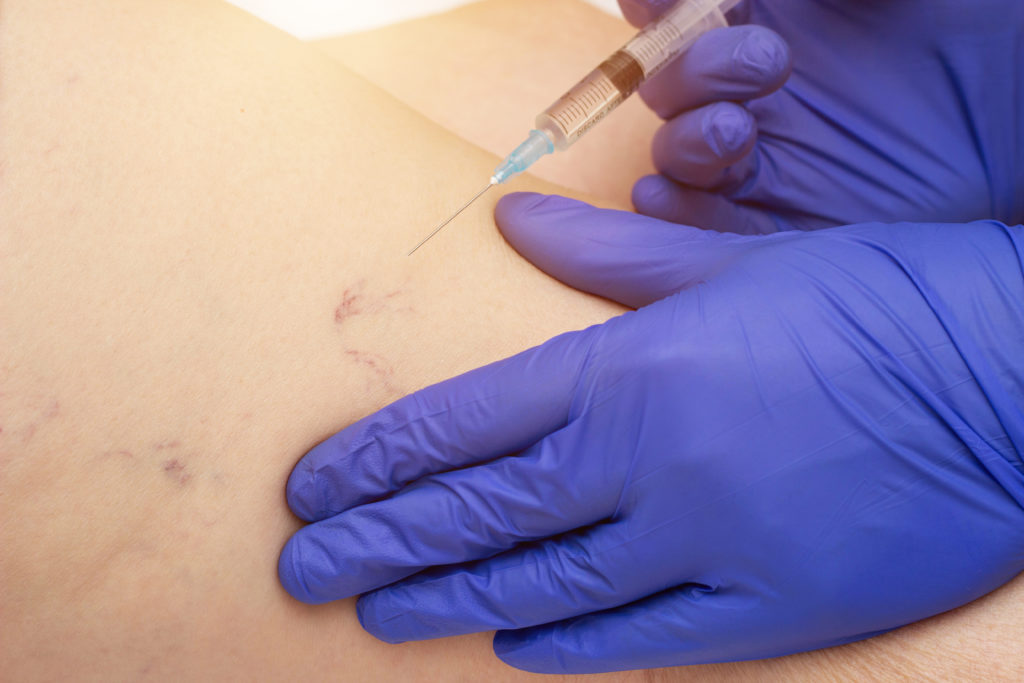Table of Contents
Picture this: you’re standing in front of the mirror, and as you smile, you notice those pesky fine lines and wrinkles creeping across your face. You wonder if there’s a way to turn back the clock and regain the smooth, youthful appearance you once had. Enter Dysport—a cutting-edge, non-surgical solution to help you combat the telltale signs of aging.
In this informative guide, we’ll delve into the world of Dysport, lifting the veil on this particular treatment that has gained increasing popularity among those seeking a rejuvenated, more radiant appearance. Join us as we explore the top 9 things you must know about Dysport, helping you settle whether it’s the right choice for your cosmetic goals.
1.) What Is Dysport?
Dysport is an FDA-approved injectable neuromodulator designed to temporarily reduce the appearance of moderate to severe wrinkles and fine lines. Derived from botulinum toxin type A, Dysport blocks the nerve signals that cause muscle contractions, resulting in a smoother and more youthful complexion. Its effects commonly target expression lines, such as frown lines between the eyebrows (glabellar lines), crow’s feet around the eyes, and forehead wrinkles.
Although it may seem similar to its well-known counterpart, Botox, Dysport has unique properties and characteristics. While both treatments use botulinum toxin type A as the active ingredient, Dysport’s formulation tends to have a slightly quicker onset of action. It may spread more diffusely, covering a more extensive treatment area. Consequently, Dysport can be an excellent alternative for patients seeking a more natural-looking, refreshed appearance without resorting to invasive procedures.
In addition to its cosmetic applications, Dysport has been used to treat various medical conditions, such as cervical dystonia, muscle spasms, and excessive sweating (hyperhidrosis).
2.) How Dysport Works
When we smile, frown, or express other emotions, our facial muscles contract, causing the overlying skin to fold and crease. Over time, these repeated muscle contractions, combined with the natural aging process and a reduction in skin elasticity, form permanent lines and wrinkles.
Dysport’s mechanism of action targets this process at its core. Dysport’s botulinum toxin type A temporarily blocks acetylcholine neurotransmitter release when injected into specific facial muscles. This neurotransmitter sends signals from nerves to muscles, instructing them to contract. Dysport effectively “relaxes” the targeted muscles by inhibiting acetylcholine release, decreasing muscle contractions, and softening the overlying wrinkles and fine lines.
Dysport’s effects are localized, meaning only the muscles treated with the injections will experience this temporary paralysis. Skilled practitioners can use this precision to their advantage, carefully selecting specific muscles to achieve a balanced and natural-looking rejuvenation while preserving your ability to express emotions and maintain normal facial movement.
3.) Dysport Benefits
Dysport offers several advantages for those seeking non-surgical facial rejuvenation:
- Wrinkle Reduction and Prevention: Relax facial muscles, soften dynamic wrinkles, and helps prevent new ones from forming.
- Non-surgical Treatment: Minimally invasive, with no incisions or extensive recovery time, making it an attractive alternative to surgery.
- Quick and Convenient: Treatment sessions are brief, often under 30 minutes, allowing patients to resume normal activities immediately.
- Natural-looking Results: When administered by a skilled practitioner, Dysport provides subtle improvements while preserving natural facial expressions.
- Temporary and Reversible Effects: The effects of Dysport typically last 3-5 months, offering flexibility without a permanent commitment.
- Potential Off-label Uses: Dysport may also help treat conditions like migraines, muscle spasms, and excessive sweating (hyperhidrosis).
Consult an experienced practitioner to create a personalized treatment plan tailored to your needs and goals.
4.) Preparing For Your Dysport Appointment
Taking the proper steps before your Dysport appointment can help ensure a smooth experience and optimal results. Here’s a brief guide to help you prepare:
- Research Practitioners: Choose an experienced, licensed practitioner specializing in neuromodulator injections to ensure the best outcomes and minimize potential risks.
- Discuss Medications: Inform your practitioner of any medications or supplements you’re taking, as some may need to be temporarily discontinued to reduce the risk of bruising or bleeding.
- Avoid Blood-thinners: For about a week before the appointment, avoid blood-thinning substances such as aspirin, ibuprofen, and certain supplements like vitamin E, fish oil, and ginkgo biloba.
- Stay Hydrated: Drink plenty of water before your appointment to keep your skin hydrated, which can help facilitate the injection process and promote a faster recovery.
- Limit Alcohol: Refrain from consuming alcohol for at least 24 hours before your appointment to minimize the risk of bruising and swelling.
- Prepare Questions: List any questions or concerns you’d like to discuss with your practitioner during your consultation.
5.) Dysport Procedure
The Dysport procedure is relatively quick and straightforward, typically completed in under 30 minutes. Here’s a brief overview of what to expect during the treatment:
- Consultation: Before the procedure, you’ll talk with your practitioner to discuss your aesthetic goals, evaluate your facial anatomy, and determine the most appropriate injection sites.
- Preparation: The practitioner will clean the treatment area and may apply a topical anesthetic or ice to minimize discomfort during the injections.
- Injection: Using a fine needle, the practitioner will carefully inject a precise amount of Dysport into the targeted facial muscles. The number of injections will depend on the treated area and your desired outcome.
- Post-treatment Care: After the procedure, your practitioner will provide post-treatment guidelines, such as avoiding strenuous activities and not rubbing the treated area for a few hours.
6.) Post-Treatment Care
After your Dysport treatment, following your practitioner’s guidelines is essential to ensure optimal results and a speedy recovery. While every practitioner may have slightly different recommendations, here are some general post-treatment care tips and what to expect:
Immediately after the procedure, you may encounter soothing redness, swelling, or bruising at the injection spots. These side effects are typically short-lived and should resolve within a few hours to a few days. You can apply ice packs or cold compresses to the treated area as your practitioner advises to minimize these effects.
It’s essential to avoid rubbing, massaging, or applying pressure to the treated areas for at least 24 hours after the procedure, as doing so could cause the Dysport to spread to unintended muscles. Also, stay upright and avoid lying down for at least 4 hours post-treatment.
It would help if you refrained from engaging in vigorous physical activities or exercise for at least 24 hours after your Dysport injections. Increased blood flow could cause the product to migrate or result in additional swelling.
7.) Expectations
Results from Dysport injections typically become noticeable within 2 to 5 days following the treatment, with full effects visible in about two weeks. The improvements usually last 3 to 5 months, after which follow-up treatments may be necessary to maintain your desired results.
When considering Dysport treatment, you must have realistic expectations about the results you can achieve. Dysport is most effective in reducing the appearance of moderate to severe dynamic wrinkles, such as frown lines, crow’s feet, and forehead lines. While it can provide noticeable improvements and a more youthful appearance, Dysport is not a permanent solution, and its effects will gradually wear off over time, typically lasting 3 to 5 months.
Likewise, individual experiences and results may vary based on age, skin type, and the severity of the wrinkles being treated.
8.) Ideal Candidates For Dysport
The ideal candidates for Dysport treatment are generally healthy adults who wish to reduce the appearance of moderate to severe dynamic wrinkles, such as frown lines, crow’s feet, and forehead lines. Suitable candidates should have realistic expectations about the treatment’s outcomes and understand it’s not a permanent solution.
However, Dysport may not be suitable for individuals with certain medical conditions, allergies or those who are pregnant or breastfeeding.
9.) How Many Injections?
The number of Dysport injections needed during a treatment session depends on various factors, such as the area being treated, the severity of the wrinkles, and the patient’s desired outcome. A skilled practitioner will carefully assess your facial anatomy and aesthetic goals to determine the most appropriate injection sites and the amount of Dysport required to achieve the desired results.
For example, treating frown lines (glabellar lines) typically requires 3 to 5 injection points, while addressing crow’s feet may require 2 to 3 injections per side. In contrast, treating forehead lines could involve multiple injections along the length of the forehead.
Takeaway
Ready to turn back the clock and achieve a more youthful, radiant appearance? Don’t wait any longer—schedule a consultation or contact us with the OC Cosmetic and Vein Center expert team today. Our skilled practitioners are here to help you explore the benefits of Dysport and create a personalized treatment plan tailored to your unique needs and goals. Reclaim your confidence and experience the rejuvenating power of Dysport by contacting OC Cosmetic and Vein Center now!




